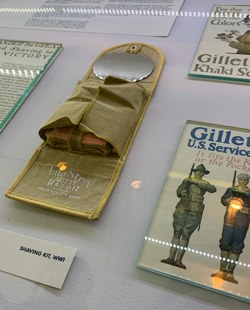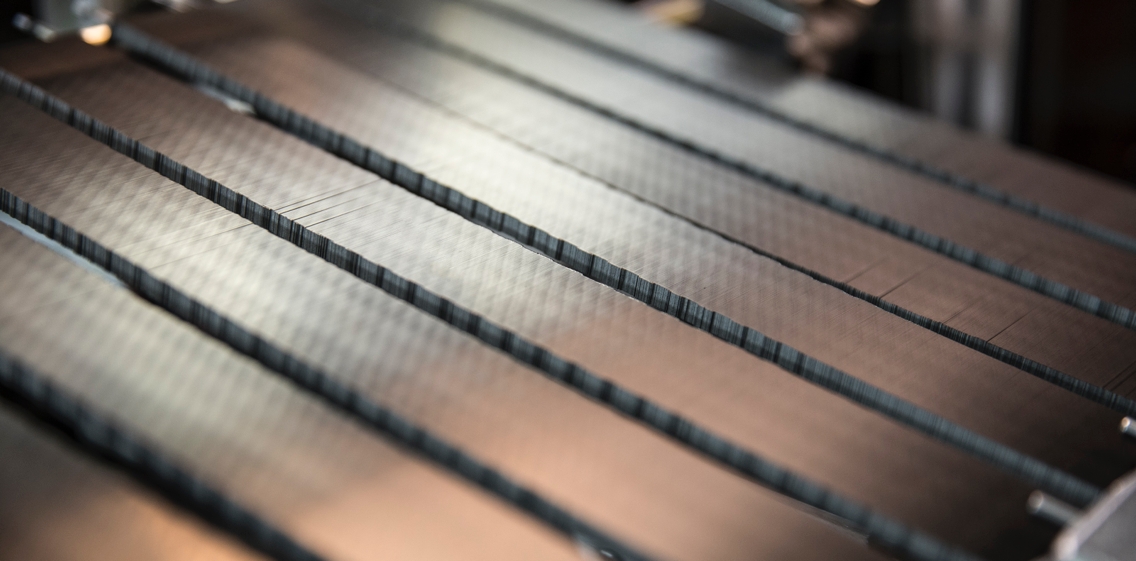There's no mistaking where you are as you approach the large glass doors of Gillette World Shaving Headquarters. A massive sign, towering over the expansive red brick building spells it out in huge block letters. Of course, once you're inside, there's no telling where you might end up. That's because the headquarters is comprised of over two dozen interconnected buildings, sprawling throughout 44 acres of Boston's South End.


The original building on campus dates back to 1904—shortly after Gillette was launched by businessman King C. Gillette in collaboration with MIT engineer William Nickerson. Just past the entryway is a wall-mounted timeline of products, showcasing early prototypes of safety razors and military-issue shaving kits (with magnetized blades that could double as a compass) to the early '90s Sensor I remember my Dad shaving with daily. And while the history runs deep here, it's clear that innovation is what keeps the machine moving—literally. The plant has autonomous vehicles ferrying supplies around and is constantly innovating while continually producing more than four billion razor blades each year.
Gillette's latest razor, the SkinGuard, was the reason they invited me to come tour the plant and meet with their R&D team. I had told them that I didn't like shaving with a blade because it irritated my skin—choosing instead to simply use a beard trimmer. They said I was the perfect candidate for this new razor specifically designed for men with sensitive skin. I have to say I was intrigued. And so, in an upstairs laboratory, I met with two white lab-coated gentleman who walked me through their development process as well as a few shaving fundamentals. It was one part biology, one part rocket science.
Afterwards, I got to try the new SkinGuard and can report that it was all that they promised and maybe a little more. You know that uncomfortable drag you feel when shaving your neck (more on that later)? This has none of it. And now I know why. It was a crash course in the science of shaving. My mind was blown, so I thought I'd share some of the most impressive facts.
10 Shaving Lessons
⋆ A human beard hair has the strength of a copper wire.
⋯
⋆ The thinner the blade, the lower the cutting force (which means it takes less strength to cut through the hair). Gillette's blades are thinner than a surgical scalpel. The blades are sharpened into a gothic arch profile for added strength and finished with a top secret coating that delivers diamond-like durability and a nonstick smoothness.
⋯

⋯
⋆ Quality razor blades will last. Of course, you need to care for your razor by rinsing it well, but changing blades once a week is probably unnecessary. These Gillette blades, for example, will provide you a full month of shaves.
⋯
⋆ Every man shaves a bit differently. A compilation of Gillette employees shaving in front of two-way mirrors illustrated this point perfectly. Some men take a mind-blowing 700 strokes to shave their face, taking nearly 20 minutes and applying ample pressure. While others get the same job done in a mere 20 or 30 strokes, applying less pressure (and perhaps missing a few spots). The average number of strokes per shave? 170.
⋯
⋆ The hair grows in different directions on your cheeks and your neck. And the pliable, textured skin on your neck responds very differently to a blade than the more uniformly smooth skin on your cheeks and chin.
⋯
⋆ There are small muscles attached to each hair follicle, the arrector pili, which cause goosebumps.
⋯
⋆ Restrokes (going over the same area with the blade) is a common occurrence when shaving. Remember those average 170 strokes? Almost 120 of those are re-strokes. This is why many razors have "lubricating strips" at the top of the razor, to help make that inevitable second pass more comfortable.
⋯
⋆ Those multi-blade razors are why we don't get heavy 5 o'clock shadow like our grandfather's used to get. It's a process that's called "hysteresis." This is when one blade touches the hair, it lifts the hair up from the follicle before cutting it. A second, third and fourth blade are positioned so that they are able to cut the lifted hair before it pulls back below the skin's surface.
⋯

⋯
⋆ Most disposable razors have a center mounted handle. This transfers all of that downward pressure directly to the blades, increasing the likelihood of shaving cuts and nicks. But a front-mounted, pivoting handle moves the load away from the blades and onto the edge of the razor (often a rubber fin that helps stretch and smooth out the skin).
⋯
⋆ Two out of three men say they have sensitive skin and get irritation when they shave. Much of this is because of pressure to the skin and curly, textured hairs growing into the skin (causing razor bumps and ingrown hairs). The SkinGuard was engineered to be like an airbag for your skin. A small comb is located between the two blades. It smoothes the skin between the two swipes of blades and raises the cutting edge just enough to cut the hair at skin level and alleviate any unnecessary pressure.
I left the World Shaving Headquarters with a whole new appreciation for the daily ritual of shaving. At the end of my lesson, it was clear that there's both a science and an art to the perfect shave. Plenty of engineering goes into these razors to make them the best possible instruments to deliver a smooth face. But it's up to us to find the razor that works for our skin type and shaving sensibility.
